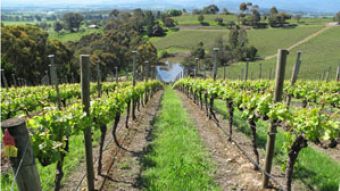The Cavas de Paraje or the Parajes del Cava Premium
The “Cavas de Paraje Calificado” are unique cavas that add value. It’s not about another level of quality, but about cavas from specific vineyard plots and about illustrating that winemaking, including cava winemaking, begins in the vineyard. That is why they wanted to combine the terms "paraje” (or "pago”) and "calificado" (qualified). These are two “premium” concepts, the first being a specific area with a high-quality vineyard, and the second, more demanding production specifications.
The idea of creating this new category was born in 2013, and those behind it developed the concept over the following two years, until it finally became official with the act of 6/2015. The conditions for becoming a “Cava de Paraje Calificado” are:
- The grapes must come from a vineyard considered exceptional due to its geology and climate
- The vines must be older than 10 years and have a maximum yield of 8,000 kilos per hectare
- The harvesting must be carried out by hand and the fermentation in the bottle must last for a minimum of 36 months.
- The cavas must be vinified on the property and have a maximum extraction yield of 48 hectolitres, the qualification for the base wine, and traceability from vineyard to point of sale.
Currently, 12 “parajes calificados” from 9 different cava producers have been recognized:
|
PARAJES |
CAVA PRODUCERS |
|
TERROJA |
SABATÉ I COCA |
|
CAN SALA |
FREIXENET |
|
CAN PRATS |
VINS EL CEP |
|
CAN MARTÍ |
TORELLÓ |
|
VALLCIRERA |
ALTA ALELLA |
|
TROS NOU |
CODORNIU |
|
THE PLETA |
CODORNIU |
|
THE FIDEUERA |
CODORNIU |
|
LA CAPELLA |
JUVE & CAMPS |
|
TURO D'EN MOTA |
RECHARED |
|
SERRALL DEL VELL |
RECHARED |
|
FONT DE JUI |
GRAMONA |
Some of these producers are already leading the way in terms of organic and biodynamic winemaking and share the belief that, in order for their wines to express the land from which they hail, they must be subjected to as little interference as possible, allowing nature to impart her characteristics to the wines.
The main virtue of the Cavas de Paraje is their resistance to the passing of the years, showing themselves to be fresh, aromatic and creamy despite their age. Only great wines preserve such a lively character over time.
The Cavas de Paraje are wines that add value to the land, to its grapes and pay tribute to the passage of time.
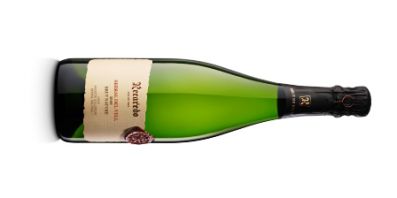 Finca Serrall del Vell - Recaredo - SERRALL DEL VELL RECAREDO 2007
Finca Serrall del Vell - Recaredo - SERRALL DEL VELL RECAREDO 2007
The soils are very chalky and contain loam and gravel that facilitate water drainage and allow the roots to penetrate deep. The microclimate and vineyards (grown with the aid of organic components of natural origin and without any chemical herbicides or insecticides) print their unique stamp on each of their vintages. The spontaneous grass cover that is allowed to grow is important to encouraging biodiversity, giving the soil a spongy character and regulating the retention and drainage of water in the non-irrigated crops. This perfect blend of Xarel.lo and Macabeo, with over 96 months (8 years) bottle-ageing and no sugar added at the time of disgorgement, creates elegance and personality. Clean, bright yellow hue with golden tints and small bubbles. The nose offers up aromas of ripe citrus, notes of pastries and hints of dried fruit and nuts. The wine is dry and citrus-fresh on entry to the palate. The finish is wrapped in the creaminess and elegance created by its long-ageing. Fine and elegant, yet with strength and power.
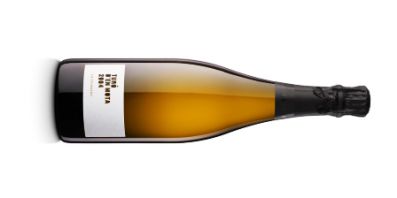 Finca Turó d'en Mota - Recaredo - RECAREDO TURO D'EN MOTA 2005
Finca Turó d'en Mota - Recaredo - RECAREDO TURO D'EN MOTA 2005
The Turó d'en Mota estate has been a pioneer in quality cava making in recent years. Its cavas rank among the finest quality sparkling wines in the world. Their extremely long-aged cava could not be more elegant and you could easily confuse it with a champagne in a blind tasting. Turó d'en Mota, in the northwestern corner of Sant Sadurní d'Anoia, is an estate of less than one hectare of bush-trained Xarel.lo, planted in 1940. The grapes fully express the character of this Penedés land, with its chalky silty-loam soil, low in organic matter. This soil, deep due to its great age, is evolved and well drained. The land is given biodynamic treatments in order to bring out its finest and greatest natural expression. After a first fermentation and two weeks’ ageing in oak barrels, the wine goes into bottle where it will rest for a period of ten years, i.e. 120 months, sealed with a cork stopper. This cava, of which less than 4,000 bottles are produced, is a pure wine, revealing the essence of the terroir and a Mediterranean character, powerful and elegant, structured and complex, fine and persistent.
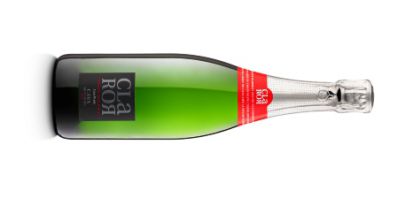 Paratge Can Prats - Vins El Cep - CLAROR 2006
Paratge Can Prats - Vins El Cep - CLAROR 2006
Bodega Vins el Cep’s biodynamically-produced Gran Reserva was released on the market in 2006. They started biodynamic growing in 2000 and bottling in 2003. This cava, made from the classic blend of Macabeo, Xarel.lo and Parellada, undergoes more than 48 months’ ageing in bottles stored on their side (en rima/sur latte). The Brut Nature Gran Reserva Claror cava comes from the Can Prats “paraje calificado” and has a fresh, powerful Mediterranean style. The estate covers around 60 hectares of old vines, all unique and organically-grown. Claror is a synonym of purity and it captures the essence and expression of an environment and Mediterranean landscape, with complex and elegant overtones derived from its long-ageing. Pale-yellow hue flecked with gold with fine, long-lasting, slow-rising bubbles. Clean on the nose with ripe apples, toasted notes, toasted bread and dried fruit and nuts. The palate is dry, with well-balanced acidity and a long finish.
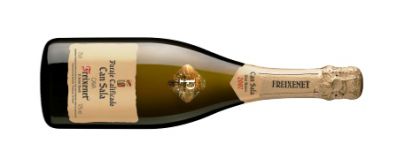 FINCA SAN QUINTÍ DE MEDIONA - Freixenet - CAN SALA BRUT NATURE GRAN RESERVA 2007
FINCA SAN QUINTÍ DE MEDIONA - Freixenet - CAN SALA BRUT NATURE GRAN RESERVA 2007
Named after the 19th-century farmhouse in Sant Quintín de Mediona, where the history of Freixenet all started. Casa Sala was built on the family estate in 1901. Today it is open to the public keen to explore the history of one of the most famous wineries in the world. Despite boasting the latest technology, the spirit of a hundred years ago lives on in this cava because they harvest the grapes by hand, press them in a wooden press originally from the Champagne region (the first one approved for use by Champagne and dating from 1900), and carry out the fermentation with native yeasts. The whole process is based on gravity-flow because this is the only way to ensure that the original characteristics are respected. After remaining for about seven years on the yeasts in bottles sealed with a cork stopper, the cavas are disgorged by hand using the "volea" (à la volée) method. The Xarel·lo and Parellada grape varieties are used for the base wine. The grapes come from carefully selected vines on the Freixeneda family estate, which has a chalky soil and excellent conditions for the growing of the traditional grape varieties. The coupages vary each year in order to respect the characteristics of the fruit and perpetuate the taste of the traditional cavas of 50 years ago. Its production is limited to 20,000 bottles per year. Quality and experience come together in this cava with unique taste characteristics. Clean and bright with a golden-yellow hue. Aromas of very ripe fruit, orange marmalade with bread notes. The palate is deliciously refreshing with fine, elegant and silky bubbles. Volume on the palate, long, intense and persistent.
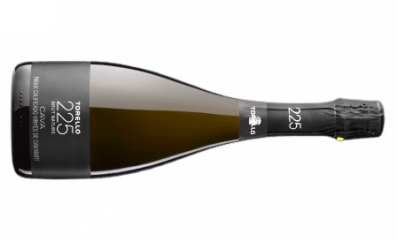 Finca Can Martí - Torelló - TORELLÓ 225 2013
Finca Can Martí - Torelló - TORELLÓ 225 2013
The base wine is stored in a total of 225 French and American oak barrels. The second fermentation and ageing take place in the bottle for 36 months. The Macabeo, Xarel.lo and Parellada grapes are harvested by hand from the Sant Martí estate that has been in the Torelló family since 1395. The organically-certified estate covers 135 hectares in the Alt Penedes region. The climate is typically Mediterranean on the Sant Martí estate and the soils are made up of a mixture of clay and limestone, poor in organic matter. The land lies at different altitudes with distinct microclimates. Throughout the estate, you can find plaques mounted on stone stating the name and number of the grape varieties and their year of planting. Fine bubbles, ripe fruit, and aromas of bread and brioche. Broad and tasty, with force and elegance, good acidity and a long finish.
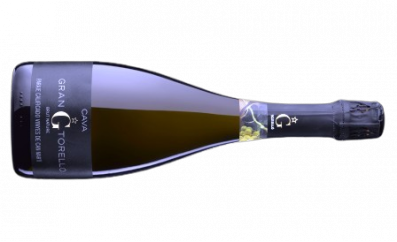 Finca Can Martí - Torelló - GRAN TORELLÓ 2010
Finca Can Martí - Torelló - GRAN TORELLÓ 2010
This is another cava from the Sant Martí estate owned by the Torelló family and growing Macabeo, Xarel.lo and Parellada, planted over thirty years ago. After harvesting and sorting by hand, the grapes are gently pressed to obtain the free run juice. The wine undergoes second fermentation and ageing in bottles stored on their side (en rima/sur latte) for 48 months and is then “riddled” by hand. Vines and olive trees grow side by side in the “paraje” on the Sant Martí estate, whose existence has been documented from 1395 to the current day. Using organic growing techniques since 2013, they strive to encourage biodiversity by allowing grass to grow between the rows of vines, thereby improving the soil, adding nutrients, and increasing the presence of insects, birds and reptiles. The cava is made from the Xarel.lo and the Parellada varietals. This Parellada gives the cava fruitiness and silkiness, making it easy and very agreeable on the palate. This is a wine with a very precise style that excites the taste buds and tempts you to carry on drinking….
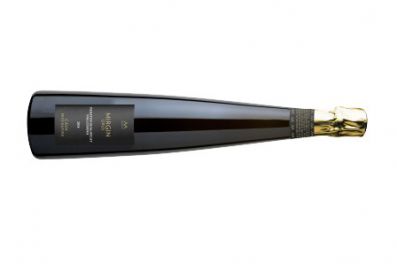 PARAJE CALIFICADO VALLCIRERA - Alta Alella
PARAJE CALIFICADO VALLCIRERA - Alta Alella
This “paraje calificado” lies between the districts of Alella and Tiana in the Maresme region, 18 kilometres from Barcelona. The plots used for the production of the “cava de paraje” extend over little more than one hectare in total, with yields under 6,000 kilos per hectare. There is one plot covering a surface area of 0.27 hectares of Xarel.lo or Pansa Blanca, and another with 0.9 hectares of Chardonnay, both planted in 1992 in the typical Sauló soil. The Sauló silty-loam soil provides excellent drainage and allows the roots of the vines to dig down fairly deep. In addition, its close proximity to the Serralada coastline creates a natural barrier against the cold north-easterly winds, as well as the humidity coming in from the east. The proximity of the sea helps soften the impact of the Mediterranean climate, attenuating the sudden changes in temperature between summer and winter.
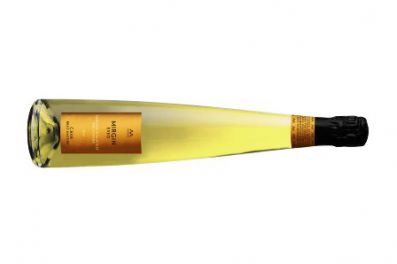 ALTA ALELLA MIRGIN EXEO - PARAJE CALIFICADO VALLCIRERA 2013 BRUT NATURE
ALTA ALELLA MIRGIN EXEO - PARAJE CALIFICADO VALLCIRERA 2013 BRUT NATURE
A cava made from the finest organically-grown Pansa Blanca (60%) and Chardonnay (40%) grapes from the Vallcirera “paraje”. The base wine is fermented in barrel and then aged for 46 months in bottle with a cork stopper, followed by a disgorgement by hand. This cava is only produced in exceptional years. Straw-yellow with golden tints. Aromatic intensity, slightly floral with ripe citrus fruit against a toasted backdrop. The palate is creamy, with well-balanced acidity, nice aromatic complexity, and a long-lingering finish.
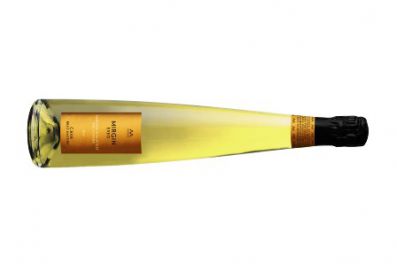 ALTA ALELLA MIRGIN OPUS - PARAJE CALIFICADO VALLCIRERA 2014 BRUT NATURE
ALTA ALELLA MIRGIN OPUS - PARAJE CALIFICADO VALLCIRERA 2014 BRUT NATURE
A cava made from the finest organically-grown Chardonnay (60%) and Pansa Blanca (40%) grapes grown in the Vallcirera “paraje”, which has a very characteristic sauló soil. It shows salinity, due to the close proximity of the sea, and an elegant bitterness from the Pansa Blanca. It will be released next spring after 36 months’ ageing in the bottle on its lees. While the Chardonnay ferments in barrel, the fermentation of the Pansa Blanca takes place in a stainless steel vat. Pale-yellow with golden tints. Aromas of pears, ripe apples and nuts with yeasty notes. Fresh on entry to the palate, with even greater aromatic complexity, well structured, balanced acidity, and good integration of the fine, long-lasting bubbles. Very tasty with a long finish.
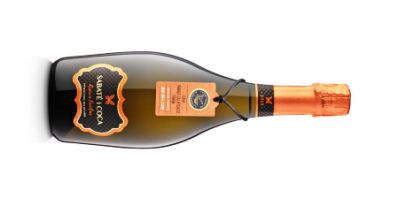 CASTELLROIG RESERVA FAMILIAR SABATÉ I COCA 2008
CASTELLROIG RESERVA FAMILIAR SABATÉ I COCA 2008
This is the iconic cava from Bodega Castellroig, a Xarel.lo single varietal from old vines. The cava is distinctive for the minerality and other characteristics derived from the terrain, which is deep and evolved, and therefore produces grapes of extraordinary maturity, resulting in a cava with very typical character. It defines itself as a “cava de terroir”, because of its commitment to, and synchronicity with, the grape variety, the microclimate, the characteristics of the soil and the work of the wine grower. All the bottles released on the market are numbered and state the vintage, the terroir of origin and the date of disgorgement, a commitment that they consider to be an expression of a job well done and the quality of their products. Part of the base wine was fermented on its lees, in French oak barrels, and then went into bottle where it rested for 36 months. Yellow hue with golden tints and fine, long-lasting bubbles. The nose is very aromatic, with floral aromas, toasted notes, ripe fruit, and dried fruit and nuts. The wine is fresh on entry to the palate thanks to its nice acidity, smoothness, structure and volume. Very persistent. This is a cava with force, liveliness, density and freshness, a reflection of its red earth.
 LA CAPELLA JUVÉ & CAMPS
LA CAPELLA JUVÉ & CAMPS
La Capella lies in the highest part of the Espiells estate, 5 kilometres northeast of Sant Sadurní d'Anoia. Here the soil is poor and shallow and the varietal planted, the Xarel.lo, is a hardy grape of strong character, ideal for the production of cavas destined for long-ageing. The Gran Reserva Brut Nature cava spends 108 months on its lees and each grape that goes into its production has been carefully selected to create and preserve the freshness required by great cavas. Their “Cava de Paraje Calificado” is the result of meticulous work and a combination of the tradition respected in the vineyards and the modernity deployed in the winery. This is a cava that has been produced to the highest of standards. The cava is aromatically very complex and mature, and, on the palate, shows itself to be deep, wide, fine, elegant, gentle and fresh.
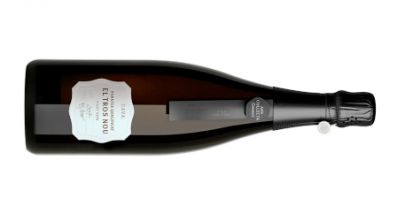 CODORNIU TROS NOU 2008
CODORNIU TROS NOU 2008
This cava is from the Serralada de Prades, in Conca de Barberà, located at an altitude of 560m above sea level, where the 2,178 Pinot Noir vines, planted in slate and sandy-loam soil, breathe in the pure, fresh air. This is a cava with over 90 months of slow ageing, with a tiny production of only 300 bottles. Its ageing has endowed it with a golden-yellow hue with salmon tints, and fine bubbles. It shows itself to be very fruity and aromatic, with aromas of ripe red fruit and sweet spices. The wine is smooth, and then creamy, on entry, then shows intensity and power on the palate. The mineral and slightly smoky notes make this a delectable cava, possessing the salinity that great sparkling wines acquire with long-ageing.
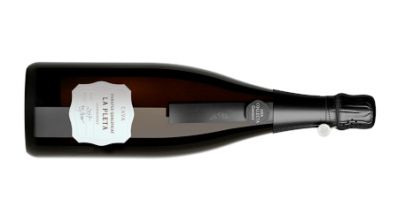 CODORNIU LA PLETA 2007
CODORNIU LA PLETA 2007
This small 7-hectare plot of Chardonnay has clay-loam soils that are poor in organic matter. Only 300 bottles of this cava are produced and these age for more than 90 months. The Chardonnay brings aromas of yellow stone fruit and white flowers, and the long-ageing confers elegance, body and volume. The Chardonnay, grown in the Segrià area in Costers del Segre, at 300 metres’ altitude, is expressive and fresh.
 CODORNIU LA FIDEUERA 2007
CODORNIU LA FIDEUERA 2007
La Fideuera estate is a plot of vines located in the Alt Penedès, planted with the Xarel.lo, a unique and extraordinary varietal ideal for the production of white wines and cavas. The limestone soil creates an expressive and elegant wine and respects its freshness, an essential component that enables the cava to realize its full potential after the long-ageing that the “cavas de paraje” from Codorniu typically enjoy. Its aromatic intensity is reminiscent of Mediterranean forest, fennel, anise, rosemary and laurel. These aromatic herbs come through on the palate and create a long, fresh finish.
 FONT DE JUI
FONT DE JUI
Penedés is the land of the Xarel.lo, a white variety with antioxydant properties, more typically found in red grapes. When the Xarel.lo comes from Font Jui, then you must also respect the cycles of nature so that the wine can express its full potential. Font Jui is a 22.5-hectare estate which also grows 7.5 hectares of Macabeo. It produces 3,500 kilos per hectare from vines planted in clay-limestone soil, low in organic matter, and a subsoil with an extraordinary biodiversity. The bush-trained and unevenly planted vines are over forty years old and are worked according to organic and biodynamic principles.
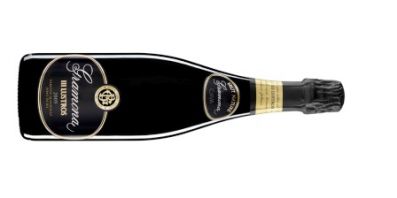 III LUSTROS 2009
III LUSTROS 2009
This cava is aged in bottles stored on their side (en rima/sur latte) for seven years and sealed with a cork stopper. It respects the Gramona cava de paraje coupage of 75% Xarel.lo and 25% Macabeo. Aromatic richness, mature notes, baked apple, toasted and dried fruit and nut aromas. The palate reveals balsamic notes and very ripe white fruit preserves. Very fresh and very long, with great versatility.
 CELLER BATLLE 2006
CELLER BATLLE 2006
Despite the challenge presented by the excessively dry and warm vintage, this cava has achieved elegance and finesse. This is the result of ten years’ ageing in bottles stored on their side (en rima/sur latte) with their yeasts, the use of a natural cork, and disgorgement carried out by hand. This is a historical cava that takes its name from the Batlle family, who founded the winery at the end of the 19th century. The 7 grams per litre of liqueur d’expedition comes from a solera which has been maintained over the generations for more than a hundred years.
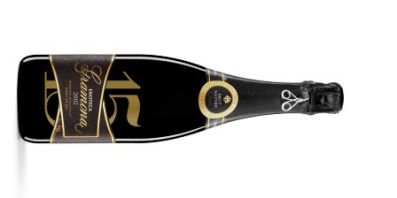 ENOTECA 2002
ENOTECA 2002
Enoteca 2001, the fruit of Gramona’s observation and intuition, obtained the highest score ever awarded by the Guia Peñín (Guide), who also considered it the best sparkling wine in its history. It has opened a new quality route for cava, one that had, until then, been the exclusive preserve of champagne. Enoteca Gramona 2002 appears to be a wine in the same vein. It spent 15 years silently at work with its yeasts, in a bottle sealed with a cork stopper, unhurriedly becoming what it is today and what it will become in a few years’ time, a great sparkling wine. It shows very nice structure marked by the Xarel.lo, perfect balance created by the Macabeo, and an extraordinary personality imparted by the passing of the years.


